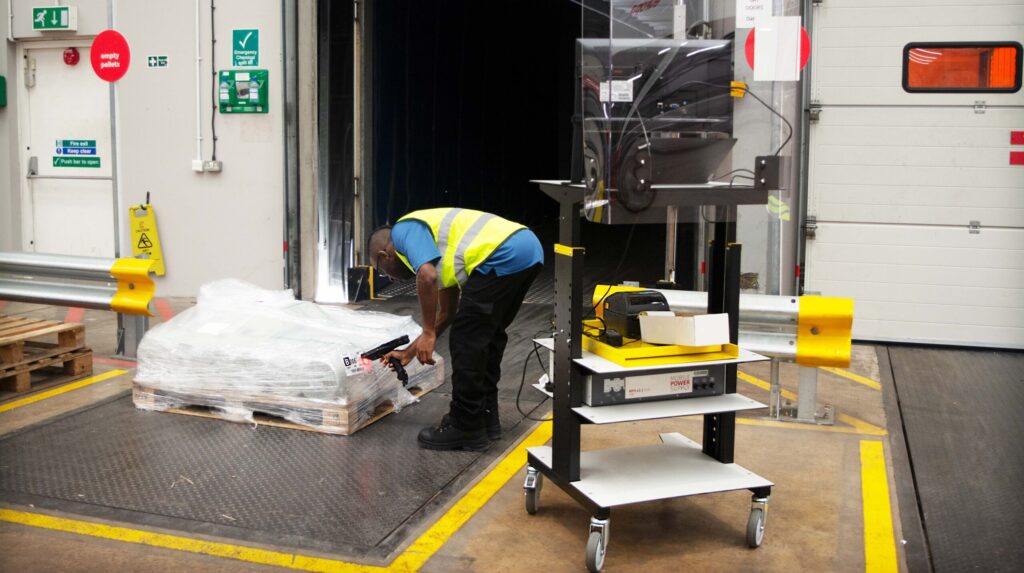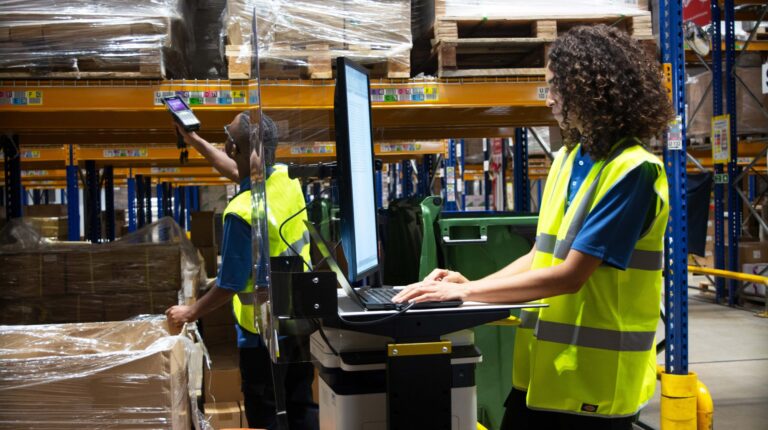The supply chain has undergone rapid changes in recent years. As e-commerce continues to grow at an exponential rate, with it comes the need for those in the post and parcel sector to build and sustain a well-oiled operation, optimized at every stage.
When looking for solutions, many warehouse operators have turned to automation to improve efficiency and keep pace with demand. This is a trend that isn’t slowing down as it’s estimated that by 2026, 75% of large organizations will have adopted some form of intralogistics smart robots in their warehouse operations to automate their tasks.
While the move to automation in the post and parcel industry has been profound and continues to revolutionize the way the supply chain operates, Southgate Global, a leader in the supply of material handling equipment and servicing in operational logistics and fulfilment, argues the importance of the human element remains.
As Tim Huetson, commercial manager at Southgate Global, explains, “Undeniably automation has made great advances in how the post and parcel sector now operates and there’s no doubt that it will continue to shape the future of the industry in the coming years. However, we strongly believe the human element of any operation remains irreplaceable.”
Not one-size-fits-all
Huetson emphasizes that while automation can enhance efficiency, it is not a universal solution: “What is going to become increasingly evident as we learn more about integrating automation is that it isn’t always appropriate or the best solution. There is no doubt it is going to be a learning process, but we believe that many tasks remain that require the skill of human operators or that are most cost-effective when done by hand. Knowing when and when not to automate is key.”
When weighing up the benefits of whether automation is the right fit for an operation, Hueston explains how it’s crucial to recognize that it cannot seamlessly slip straight into any warehouse.
“Depots have been historically designed with humans at the forefront and such workflows will not always benefit from automation and AI-powered robots,” he says. “This can be particularly challenging for older depots for example, which would require additional investment which can be extremely costly. An entirely automated approach often doesn’t help with highly variable activities, where the cost of automation can be prohibitive or the automated systems overly sophisticated.”
Addressing the issue
The sector faces unique challenges, particularly with the demand for next-day and same-day deliveries. These time-sensitive operations can significantly impact manual labor and the handling of parcels, necessitating a blend of human and automated efforts to maintain efficiency and meet delivery promises.
In response, Southgate predicts a growing trend in fulfilment and logistics equipment specially designed to optimize the human element, and for that to be blended with best-in-class automated solutions.
Huetson explains, “Automation isn’t a one-size-fits-all situation, it needs to be working in cohesion with human resources. For the areas where automation isn’t appropriate, innovative equipment is the answer – an area in which we work hard to offer solutions at Southgate. By optimizing manual tasks through innovative equipment, companies can enhance productivity without fully relying on automation.”
Becoming mobile
Making the switch to a mobile powered workstation (MPW) at the loading bay is a key example of this. With its own integrated power system used to power laptops, barcode printers or scanners, operatives can reduce processing times by dealing with all the tracking requirements and updates at the point and time of arrival or departure, boosting parcel processing times.
With over 600 customers using Southgate’s MPW across the UK and Europe, the solution has already cut major operational logistics and fulfilment operatives’ costs by £4,256 (US$5,410) per operative per year.
Another example of having the right solutions for manual areas is Southgate’s Dock Levelling Ramp, enabling organizations to rapidly expand the efficiency, flexibility and accessibility of their docks by moving goods right up and into their light trucks and vans directly from the warehouse.

Mitigating human mistakes
With the involvement of humans, however, also comes the inescapable risk of human error. While humans have obvious benefits over automation such as analysis skills and critical decision making, they also can make mistakes.
One way to mitigate risk is to provide equipment that minimizes it. Discussing the MPW, Huetson says, “By making the switch from a static workstation, organizations are using their human resources in a more effective way. Having the ability to take power with you means that operatives can work, scan, print labels or indeed anything that requires power, vastly improving productivity.
“Having an MPW at the loading bay or wherever else in your facility you need a mobile power supply, means you are majorly reducing the likelihood of mis-keyed data, misprinting labels or labelling errors which can result in a package getting misplaced or delayed, all while eliminating walk time.”
Working in harmony
As consumers’ appetite for fast, free shipping continues to push the sector to introduce new initiatives, Southgate predicts the areas that still require, or simply benefit from, human labor will be the key areas that see innovative ideas introduced.
Huetson says, “At Southgate, we work closely with our customers to listen to their frustrations and where their operational needs aren’t being met. By reviewing the finer details within the process and identifying where equipment can work with human resources, we offer bespoke solutions that save costs, reduce disruption, meet sustainability goals and increase efficiency. As more post and parcel companies look to integrate equipment that works in harmony with people, we expect it to shape many upcoming trends.”


